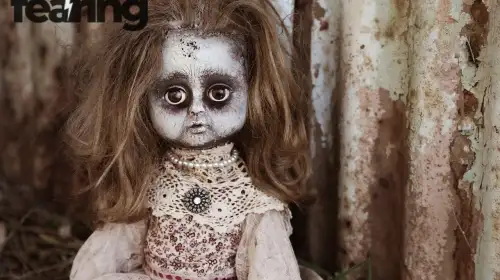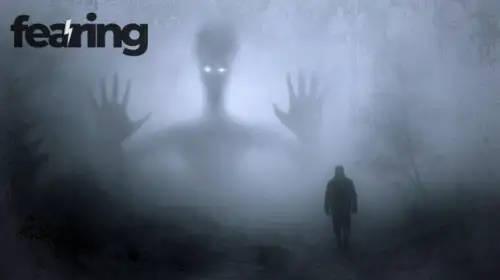Scary Stories are part of every culture — whispered by campfires, printed in books, and streamed on screens long after midnight. They connect us through a shared fascination with fear, curiosity, and survival. Whether born from folklore, history, or imagination, these stories continue to define how humans understand the dark.
Horror writer Stephen King once said, “We make up horrors to help us cope with the real ones.” And that’s exactly what scary stories do — they turn our deepest anxieties into tales we can control, survive, and retell.
The Anatomy of Fear
Fear is both ancient and necessary. From the moment humans gathered around firelight, stories of monsters and spirits served as warnings — ways to teach children about danger before they ever encountered it.
Psychologist Dr. Chris French explains, “Fear is the rehearsal of survival. Scary stories are how our brains simulate risk safely.”
Modern neuroscience agrees. A 2025 Cultural Analytics Journal study showed that listening to horror stories increases adrenaline by up to 40%, while also activating empathy centers in the brain. That’s why we flinch at every creak — we’re wired to imagine what could go wrong.The Most Enduring Scary Stories of All Time
| Title | Origin | Why It Endures |
|---|---|---|
| The Tell-Tale Heart | Edgar Allan Poe (1843) | Explores guilt as a haunting force |
| Dracula | Bram Stoker (1897) | Blends seduction, fear, and immortality |
| Frankenstein | Mary Shelley (1818) | The horror of creation without responsibility |
| The Monkey’s Paw | W.W. Jacobs (1902) | Be careful what you wish for |
| The Lottery | Shirley Jackson (1948) | Everyday life turned monstrous |
These tales persist because they reveal moral and emotional truths beneath the surface of fear.
Author Neil Gaiman said, “Stories teach us that monsters can be killed — and sometimes, that they can’t.”
Modern Horror for a Digital Age
In the 21st century, scary stories have escaped the page. They live in forums, podcasts, and viral videos. Platforms like Reddit’s r/nosleep and YouTube’s Creepypasta channels have transformed storytelling into an interactive experience.
Tech anthropologist Marina Lopez explains, “The internet reinvented folklore. We used to gather around a fire — now we gather around a glowing screen.”
Some of the most viral digital horror stories include:
The Backrooms: A story of endless yellow corridors where time doesn’t exist.
Slenderman: A faceless figure born online that entered real-world folklore.
Ben Drowned: A cursed video game cartridge that blurs reality and nightmare.
The Russian Sleep Experiment: A disturbing fictional experiment that millions believed was real.
The SCP Foundation: A collaborative online archive of supernatural “entities” told as government reports.
Each of these stories thrives because it uses technology — our most familiar comfort — to make the unreal feel possible.
Why We Keep Reading
Fear releases endorphins and dopamine, the same “reward” chemicals triggered by thrill rides or falling in love. This makes horror strangely pleasurable.
Neuroscientist Dr. Dean Burnett notes, “Scary stories let us feel danger while knowing we’re safe. It’s an ancient thrill in a modern wrapper.”
In 2025, the global horror entertainment industry exceeded $24 billion, according to World Travel Market Report. Streaming platforms continue to release original horror series, while podcasts like Lore and The Magnus Archives reach millions weekly.
Real-Life Inspired Scary Stories
Some stories terrify because they might be true.
The Dyatlov Pass Incident (Russia, 1959): Nine hikers found dead under mysterious conditions in the Ural Mountains. Theories range from military experiments to alien encounters.
The Black-Eyed Children (USA, 1990s): Reports of eerie children knocking on doors at night, asking to come inside.
The Enfield Poltergeist (UK, 1977): A haunting witnessed by police officers and journalists, later inspiring The Conjuring 2.
The Winchester Mystery House (USA): A mansion built with hundreds of staircases “to confuse spirits.”
The Silent Twins (UK, 1980s): Identical sisters who spoke only to each other — and whose isolation turned eerie.
Historian Mary Roach points out, “What makes these tales powerful isn’t proof — it’s persistence. The longer a story survives, the more truth it carries emotionally.”
The Cultural Role of Horror
Scary stories serve a social purpose. They warn, unite, and sometimes heal. During uncertain times — from pandemics to wars — horror consumption spikes. Fear becomes a way to process chaos.
Sociologist Dr. Helen Fisher explains, “Collective fear creates community. When we gasp together, we survive together.”
Even classic fairy tales like Hansel and Gretel or Bluebeard once functioned as survival manuals, teaching children to fear the right things — strangers, greed, darkness.
Global Scary Stories That Cross Borders
| Country | Famous Legend | Key Theme |
|---|---|---|
| Japan | Kuchisake-Onna (“Slit-Mouthed Woman”) | Vanity and revenge |
| Mexico | La Llorona (“The Weeping Woman”) | Guilt and grief |
| Ireland | The Banshee | Premonition of death |
| Turkey | Alkarısı | Supernatural punishment for neglect |
| Norway | Draugr (Undead sailors) | Greed beyond the grave |
Folklorist Evelyn Chase says, “Fear travels better than any story. Every culture has its ghost because every culture has its guilt.”
How Storytelling Creates Empathy
Beyond terror, scary stories help us face the parts of ourselves we avoid. Horror externalizes inner conflict — guilt becomes ghosts, trauma becomes monsters, grief becomes haunting.
Psychologist Dr. Ibrahim Kaya writes, “When people tell ghost stories, they aren’t describing death — they’re describing emotion.”
This emotional honesty explains why modern audiences embrace horror films like Hereditary and The Babadook, both of which blend supernatural terror with real family grief.
The Future of Scary Stories
Artificial Intelligence and Virtual Reality are changing how fear is experienced. Interactive horror now adapts to your heartbeat, gaze, and choices.
Engineer Lena Ortiz explains, “The next generation of horror won’t just be watched — it will watch you back.”
AI models can now write custom scary stories using data from users’ preferences, crafting deeply personal fears. Experts warn, however, that such realism may blur boundaries between fiction and trauma.
Despite the technology, the purpose remains the same: to explore fear safely. As astrophysicist Neil deGrasse Tyson once said, “We’re drawn to darkness not because it’s safe — but because it’s honest.”
FAQ
Q1: Why do people enjoy scary stories?
A1: They trigger adrenaline and dopamine, giving excitement in a safe environment.
Q2: Are scary stories harmful?
A2: For most people, no. They can even reduce anxiety by letting the brain process fear indirectly.
Q3: What’s the difference between horror and scary stories?
A3: Horror emphasizes shock; scary stories focus on psychological suspense and atmosphere.
Q4: Are any scary stories real?
A4: Some are inspired by real events or unexplained phenomena, but most blend fact with fiction.
Q5: Why do scary stories survive across cultures?
A5: Because fear is universal — it connects people more deeply than comfort ever could.
Sources
Cultural Analytics Journal 2025
Statista Horror Genre Data 2025
World Travel Market Report 2025




